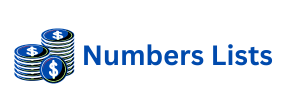In the evolving digital landscape, content writing must transcend basic keyword stuffing. Semantic SEO offers a more sophisticated approach. It focuses on understanding user intent and the relationships between entities. This method ensures your content truly resonates with search engines. It also provides genuine value to your audience. Embracing semantic principles creates more comprehensive and relevant web pages. This ultimately leads to stronger organic visibility.
Search engines now prioritize context and meaning. They look beyond individual keywords. They seek to understand the full topic of a page. This holistic view helps them deliver the best possible results. For content creators, this means crafting rich, interconnected narratives. It is about answering questions thoroughly. It is also about anticipating related queries. A well-executed semantic strategy builds authority over time. It establishes your site as a trusted resource in its niche.
Content that aligns with semantic SEO principles performs better. It attracts more qualified traffic. This approach moves beyond simple exact-match keywords. Instead, it embraces synonyms, related terms, and broader topics. It involves structuring information logically. It also includes using schema markup where appropriate. This helps search engines process your content more effectively. Ultimately, it enhances user experience and search performance.
The Power of External Backlinks for Semantic Authority
External backlinks are fundamental pillars of any strong SEO strategy. They represent votes of confidence from other websites. When reputable sites link to your content, it signals trustworthiness. This greatly boosts your site’s domain authority. Search engines view these links as endorsements. They indicate that your content is valuable and credible. High-quality external backlinks are crucial for semantic relevance.
Building a robust external backlink profile requires strategic effort. It is not about quantity, but quality. Links from authoritative, relevant websites hold the most weight. These types of links enhance your site’s perceived expertise. They also reinforce its authority within your industry. Effective outreach and creating exceptional content are key. This attracts natural links from respected sources. This process is often referred to as authority building.
Every external backlink contributes to your site’s overall semantic profile. It tells search engines how your content relates to the broader web. Diversifying your backlink sources is important. It shows a wider recognition of your expertise. Focusing on links from niche-specific sites is also beneficial. These links deeply embed your content within its semantic context. They strengthen your topical authority significantly. This makes your site a more prominent voice in its field.
Optimizing Your Site with Internal Backlinks and Content Structure
While external links bring authority from outside, internal backlinks fortify it within. These links connect different pages on your own website. They help search engines understand your site’s structure. They also pass link equity between your pages. A well-planned internal linking strategy enhances user navigation. It also distributes ranking power more effectively. This ensures that valuable content is discovered by both users and crawlers.
Strategic internal linking supports your semantic SEO goals directly. By linking related articles, you create topical clusters. These clusters demonstrate your expertise on a subject. They show the breadth and depth of your coverage. For example, linking from a general post to a detailed guide on a specific sub-topic is very effective. This strengthens the semantic connection between pages. It makes your site a more valuable resource.
Implementing an effective internal backlink structure requires thought. Identify your most important pages. Then, link to them from relevant supporting content. Use descriptive anchor text. This provides context about the destination page. For a deeper understanding of how these elements fit into a larger plan, explore what makes a comprehensive content strategy. This approach makes your site a cohesive and semantically rich information hub.
Integrating Backlinks for a Holistic Content Strategy
Semantic SEO thrives on interconnectedness. Both external and internal backlinks contribute to this goal. External links validate your content from the outside. Internal links organize and empower it from within. Together, they form a powerful network. This network tells search engines exactly what your site is about. It clearly demonstrates the value it offers to users. This integrated approach builds true topical authority.
A holistic content strategy considers backlinks from the outset. When planning new content, think about both types of links. How can this new piece attract external links? How will it link to existing internal pages? Answering these questions early on is crucial. It ensures every piece of content serves a purpose. It also helps in strengthening your overall domain. This proactive strategy ensures maximum SEO impact for all your efforts.
This integration also extends to content updates. Regularly review your existing content. Look for opportunities to add new internal links. Seek out chances to earn fresh external links. This continuous improvement keeps your content relevant and powerful. It reinforces your site’s semantic footprint over time. A dynamic backlink strategy is essential for sustained growth and visibility in search results.
The Future of SEO: A Combined Backlink Approach
The future of SEO is undeniably semantic. Search engines will continue to prioritize relevance and user intent. This makes a combined backlink approach more vital than ever. Focusing on both external and internal links helps create a truly authoritative site. It ensures your content is not just found, but deeply understood by search algorithms. This leads to higher rankings and more meaningful engagement.
Final Thoughts on Building Semantic Authority with Smart Linking
Strategic content writing, supported by a smart linking strategy, is non-negotiable. Leverage external backlinks for domain authority. Use internal backlinks for site structure and topical depth. This synergistic approach builds a robust online presence. It ensures your content stands out in a crowded digital world. Prioritize quality, relevance, and user experience. Success in semantic SEO will surely follow.
